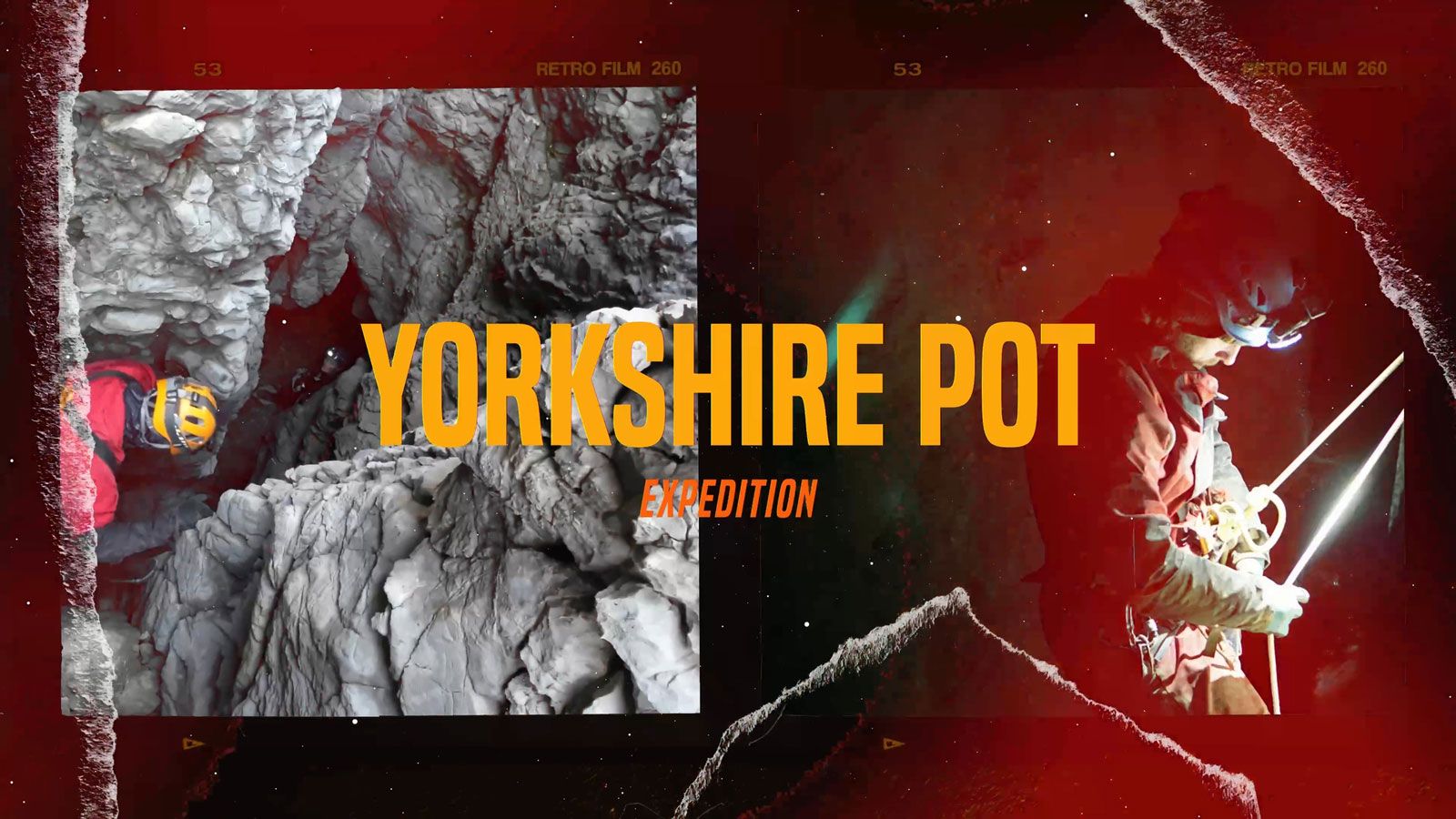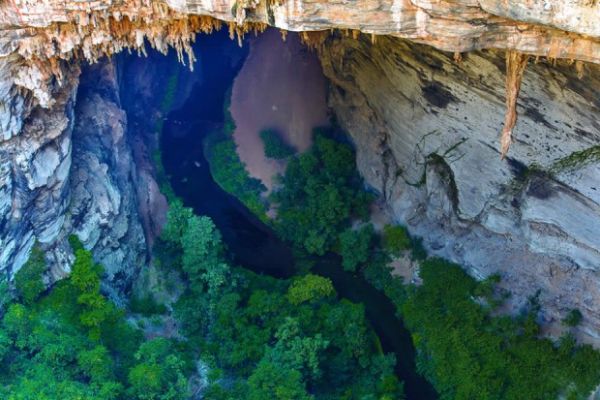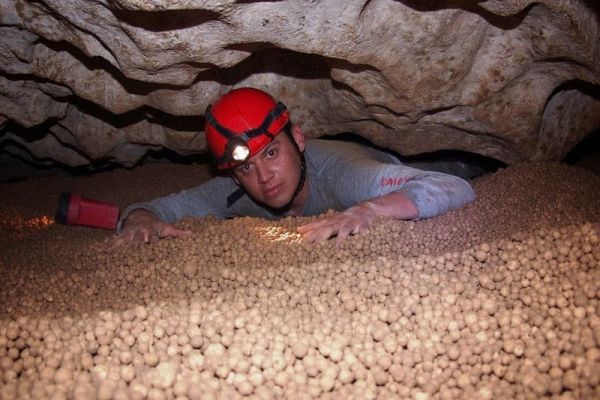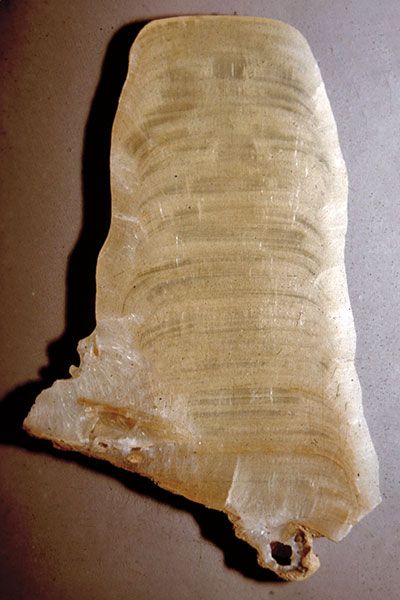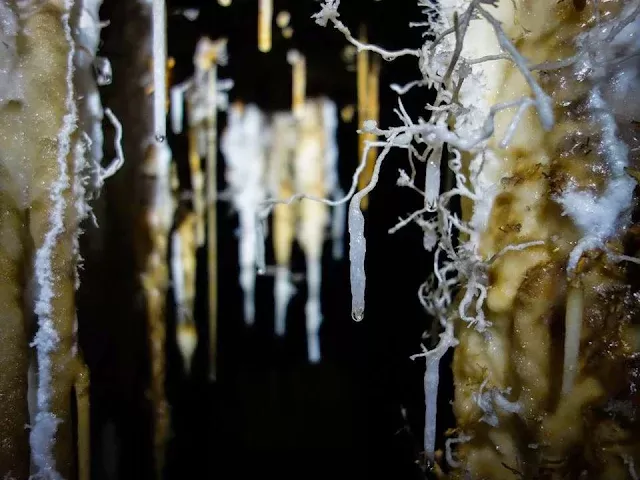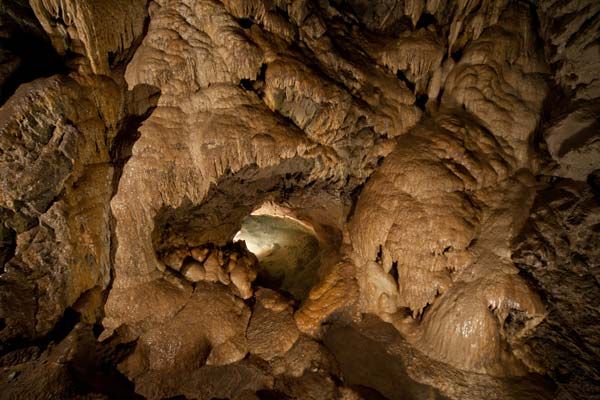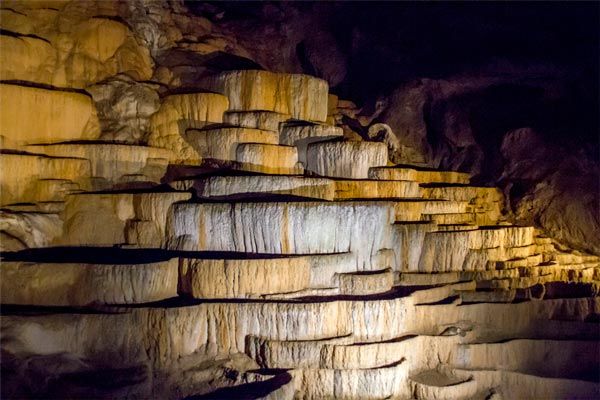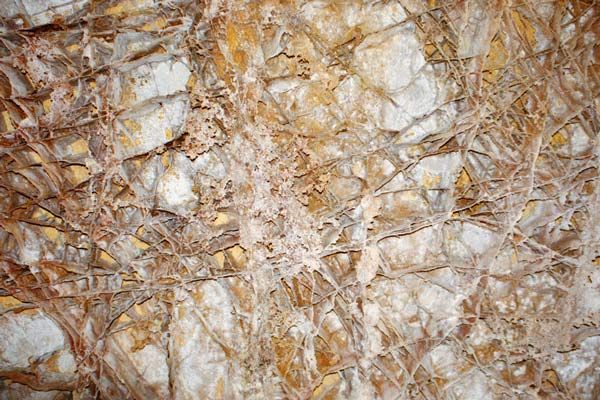The creation of speleothems showcases an exquisite example of chemistry in nature, rooted in the interaction between water, carbon dioxide, and carbonate rocks. Central to this process is the transformation of calcium carbonate (CaCO3) in these rocks into calcium bicarbonate [Ca(HCO3)2] in water, and the reverse of this reaction under different conditions.
The Role of Carbonate Rocks:
Carbonate rocks, primarily limestone, are formed from the skeletal remains of marine organisms deposited on the ocean floor, compacted and solidified over millions of years. Limestone is the most common type of carbonate rock and a primary site for cave formation due to its solubility in weakly acidic solutions. Besides limestone, other carbonate rocks like dolomite and calcite also host cave formations, though limestone caves are the most prevalent. The presence and distribution of these rocks are fundamental to the karst landscapes that feature these extraordinary subterranean environments.
Dissolution of Limestone: The process begins as carbon dioxide from the air and soil dissolves in rainwater, forming carbonic acid. This mild acid percolates through the soil, reaching the underlying carbonate rocks and initiating the dissolution of calcium carbonate to form calcium bicarbonate. This reaction, essential for carrying dissolved minerals into caves, is represented by the equation:
CO2 + H2O + CaCO3→Ca(HCO3)2
Through this process, the building blocks for stalactite and stalagmite formations are transported into the caverns below.
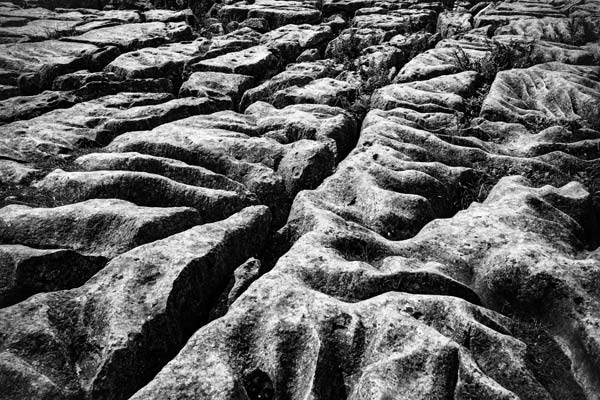
Karren - limestone formation created by dissolution.
Precipitation of Calcite In the cave environment, the calcium bicarbonate solution releases carbon dioxide and precipitates calcium carbonate upon encountering cave air. This occurs through two key mechanisms: water evaporation and CO2 off-gassing, driving the reaction back to its original constituents and leaving behind solid calcium carbonate. This cycle:
Ca(HCO3)2→CO2 + H2O + CaCO3
results in the gradual accumulation of calcite, forming the familiar stalactites and stalagmites.
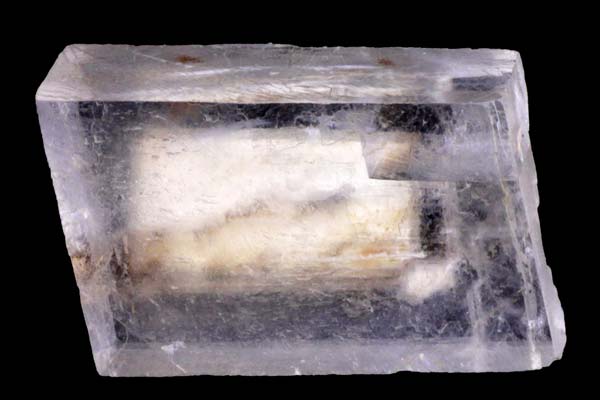
Pure Calcite in its crystaline form
Environmental Influences and Rock Varieties: The type of carbonate rock, along with environmental factors like temperature, humidity, and CO2 concentration, influences the morphology and growth rate of cave formations. Limestone, with its varied textures and porosity, can give rise to a wide array of speleothems, while the presence of other minerals can add colors and patterns. The specific conditions and chemistry of the water-rock interaction lead to the diversity seen in cave formations globally.


